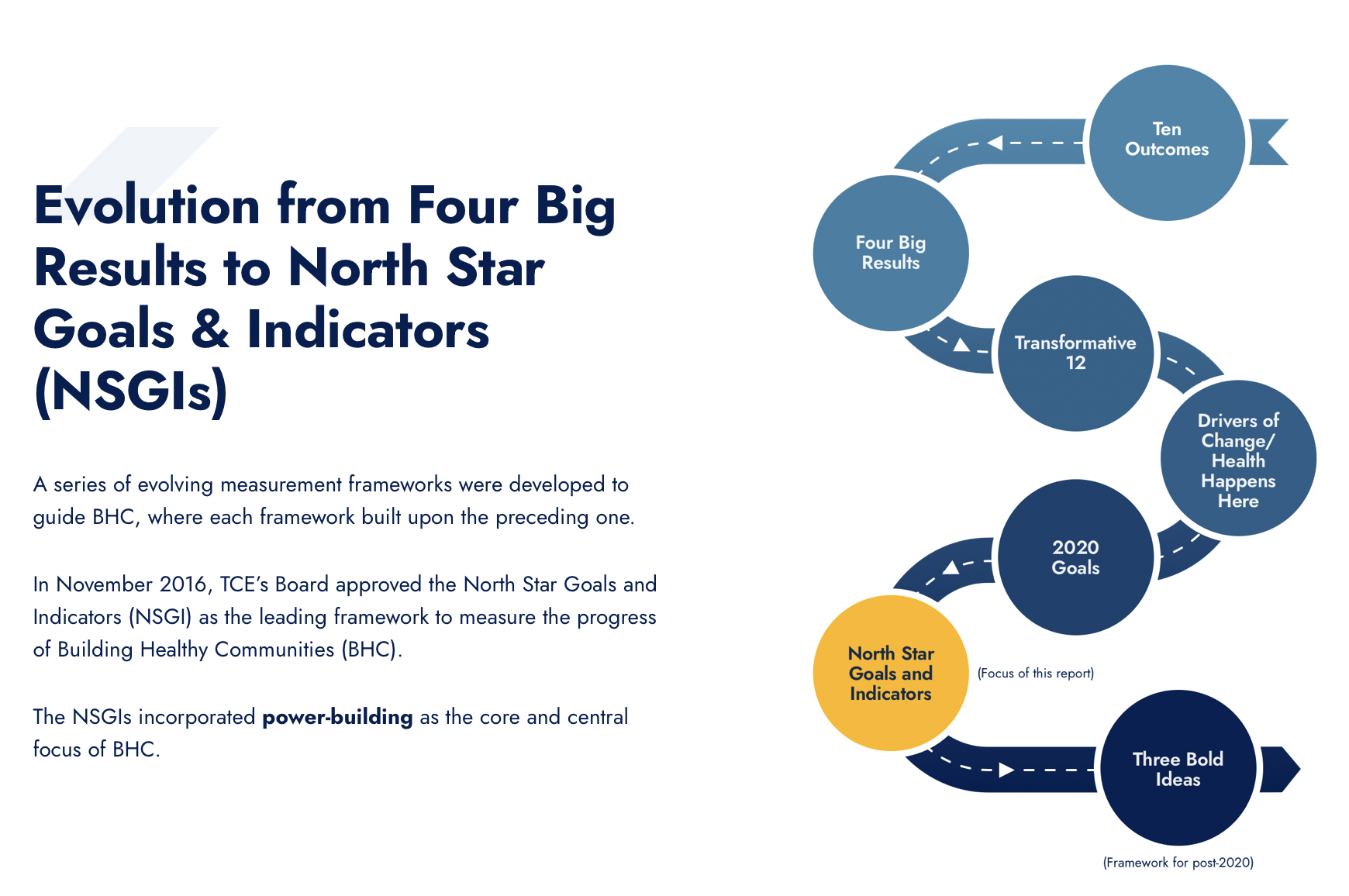Short Stories on Long-Term Initiatives: Sharing Knowledge with Creative Approaches
/by Clare Nolan and Matthew Ingram
When it comes time to wind down investments in long-term initiatives, and even on shorter projects, foundations want to leverage learnings and identify ways to share these with others who can benefit from this knowledge. And while formal evaluation reports and professional publications are nice, they are rarely designed to meet the interests of the general public. How can evaluators and funders partner together to share learning in creative and meaningful ways that people will actually read?
Luckily there are all sorts of ways to tell a long story in a shorter, more dynamic form. That could be a snazzy slide deck, an infographic, a short video, or a quiz. Here are some examples of different storytelling devices, along with some memorable examples, based on a recent scan of funders who worked to share knowledge following investment in long-term initiatives.
Visualizations
Visualizations are used to capture stories and outcomes, and make findings more accessible and engaging. These include videos or short films, infographics, photo essays, and story or photo books. Some examples include The Barr Foundation's 10-year BostonBRT initiative’s film, produced in 2021, which told the story of transformations that came out of the bus rapid transit transportation initiative, and has been viewed over 8,000 times. The California Endowment’s Building Healthy Communities 10-year initiative has shared a number of visualizations on their website, including short films, maps, and timelines. >
Capturing Conversations in Real Life
Conferences, webinars, and convenings are interactive formats for sharing impact and lessons that allow for two-way dialog and real-time learning. In some cases, these interactions can be made available for future reference (e.g., a recorded webinar that is posted online). The California Endowment’s Learning, Equity, and Power (LEaP) series distills lessons from its long-term Building Healthy Communities effort in the form of webinars on topics such as how foundations can build community power and better support youth.
Post It: Blogs and Social Media
Blog posts don’t have to be generic, or boring! Offering insights in a way that is accessible and with specifics brings people into your world through narrative. Shorter form sharing on social media can achieve the same. The Annie E. Casey Foundation spent over a decade investing in strengthening families and shared lessons learned in a concise blog that links to other resources and more detailed materials. The Hewlett Foundation spent more than six years focused on nuclear security starting in 2008 and published an insightful post that simplifies and distills findings from a full evaluation of the work. >
News Folks Can Use: Toolkits, Resources, and Case Studies
Translating learning into practical and accessible tools that others can use in their own work is another way to spread knowledge. Toolkits, resource centers, and technical assistance materials are ways that foundations seek to leverage learnings to influence and assist the work of peers. Following their multi-year investments in community foundations in California, the James Irvine Foundation created a series that includes examples and tools to help maximize impact based on their learnings. The Heinz Foundation partnered with Child Trends to create a playbook > that includes guidelines for equitable grantmaking and other lessons learned.
The Open Society Foundation created a guide to advocacy that includes checklists and implementation steps. Also, the Urban 95 initiative from the Bernard van Leer Foundation features many well-presented and accessible case studies to help support healthy cities for children and families. Engage R+D also has news-you-can-use toolkits, like last year’s Field Guide for E&L for Foundations, including a handy companion for CEOs, which they turned into an infographic. >
Choose Your Own Adventure
There are, of course, examples that don’t fit well into the above categories. The outcome of a funder listening tour; sessions to build a community of practice amongst foundation staff; revisiting grantee sites several years after the sunset of an initiative to meet and hear from stakeholders; the sponsorship of grad students to “play” with data and find creative ways to analyze or interpret information; and, the archiving of raw survey data for public access and analysis. W.K. Kellogg Foundation’s brochure on racial healing > offers a concise public-facing take-home doc on a deeply important matter. The Nicholson Foundation published a full-length book that seeks to share lessons from its more than 20 years of grantmaking.
Of the so many ways to share, what examples have stood out to you? Comment here or post on social #sharedlearnings.







